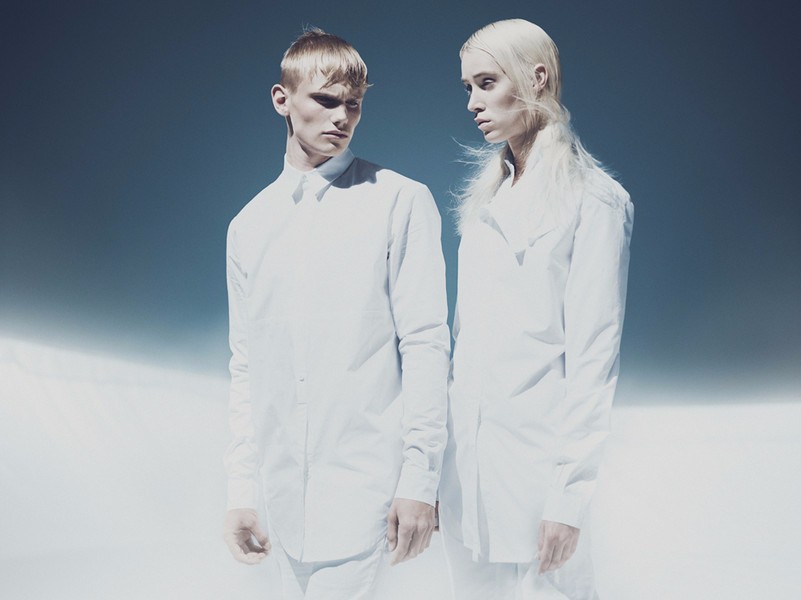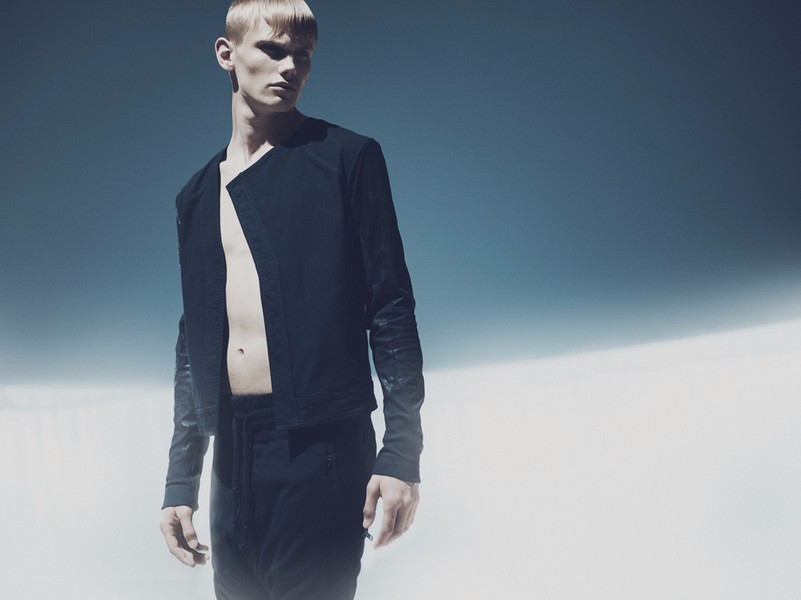Odeur began life as a branding experiment to challenge the preconception that a brand’s identity should be purely visual. They scrapped the traditional logo and instead created a clean, white, androgynous scent that embodied the spirit of the brand therefore creating a deeper connection between garment and their wearers. Today Odeur, designed by Petter Hollström and Gorjan Lauseger, explore their unisex vision through minor details – impeccable cuts and graphic silhouettes take centre stage in minimalist, impactful collections.
Annie: I’ve read online you said that the use of scent enhanced the bond between the brand and its wearers, why do you think scent of all the senses has such an impact on our emotions?
Odeur: Scent is an intriguing sense, a non-visible sensory feeling, at times more powerful than any form of visual interaction. The idea of using the concept of an individual scent as a non-visual logo of the brand was suggested as an experiment to see if you, over time, were able to replace a traditional word-based logotype. Scents have a large impact on our emotions since they are stored in the reptilian part of the brain. Henceforth, one can travel quickly in time and space through different scents, hence they remain highly personalised experiences.
A: Your collections are often inspired by complex ideas, for example, your SS14 collection explores ‘Parallelism’, why was this your source of inspiration?
O: The collection is built on the concept of two separate ideas developed on different wavelengths and parts of the world that, without prior knowledge, might eventually collide. Hence the term parallelism.
A: Is inspiration of this kind easy to translate into clothing?
O: Each collection is generally something that we converse profoundly about and that we shape our thoughts around after long creative dialogues. ODEUR is all about creating our own world and personal interpretations of it. It’s a more common understanding of something that we want to comment on or choose to communicate. It’s not necessary for us that the message is always 100% apparent in the collections.
A: The brand maintains a unisex vision, what made you do this?
O: We found out when we started that the garments really could be worn by women as well as men, so we have always shot all the garments on both men and women. We don’t want to decide who wears our garments, thus removing any gender restrictions.
A: Do you believe fashion would be more interesting if more designers stayed away from gender distinctions?
O: Well, we don’t have anything against designers who choose to make solely mens or womenswear. In general, we think that people should not be too overly aware if the styles they are wearing are garments ‘made for women’ or ‘for men’. One should definitely wear what you want and what you feel compliments your own style best.
Interview: Annie Price









